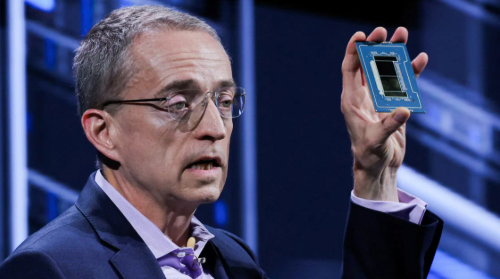
Intel Corporation well known for innovation, has experienced a significant shakeup. Intel announced on Monday that their CEO Pat Gelsinger retired as of December 1 leading to a step down from the company’s board of directors. Gelsinger worked for 30 years at Intel till 2009 He returned to the company in 2021 replacing Bob Swan. He returned with an ambitious goal of resuscitating Intel’s chip manufacturing prowess and was ousted from his position as the CEO. He worked dedicatedly for the chipmaker for more than 3 years.
His tenure at Intel was emphasized by a series of bold initiatives aimed at regaining the dominance of the company in the semiconductor industry.
Gelsinger’s tenure at Intel was marked by a series of bold initiatives aimed at regaining the company’s dominance in the semiconductor industry. He pioneered a massive investment in new manufacturing facilities, aiming to bring chip production return to the United States and reduce credence in overseas manufacturers. However, regardless of these efforts, Intel has faced challenges in matching levels with its competitors, particularly in the rapid evolution of artificial intelligence and high-performance computing.

The board decided to remove Gelsinger, the decision stems from concerns about the gradual progress of regaining their market share amongst competitive threats posed by rivals like Nvidia and TSMC. Gelsinger’s ambitious plans were well-intentioned but criticized for their high cost and slow execution.
Moreover, adding to the challenges of the company, intel is facing 2 separate lawsuits filed by investors this year. The lawsuit claims that they were misled about the company’s financial performance. The latest was filed by the pension fund in August which was followed by the chipmaker’s announcement that it will slash 15,000 jobs.
Intel is facing two separate lawsuits filed this year by investors claiming they were misled about the company’s financial performance. The latest was filed by a pension fund in August following the chipmaker’s announcement that it would slash 15,000 jobs.
Gelsinger promised that his work would bring the company back on its “Grovian” spirit and fix the years of mistakes that saw Intel lose its chip market dominance to smart chip design leader Nvidia (NVDA) at Taiwan Semiconductor Manufacturing Co. (TSM). Although the sales have fallen, which is just recovering as higher competition comes from AMD by British chipmaker ARM; the whole CPU market comes under threat due to emerging GPU chips that will replace CPUs to run generative artificial intelligence. Intel designs its chips but has never produced semiconductors for external customers, and its chip manufacturing process has slowed since the mid-2010s.
After Gelsinger’s departure, Intel has appointed two interim CEOs, David Zinsner, who is the company’s CFO, and Michelle Johnston Holthaus, executive vice president. The board is now searching for a permanent replacement. This leadership change marks a significant crossroad at Intel. The company will need to adapt to a rapidly changing technological landscape and regain investor trust. As the semiconductor industry continues to evolve, Intel’s ability to innovate and execute will be crucial to its future success.

